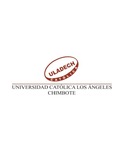| dc.contributor.author | Torres-Roman, J.S. | |
| dc.contributor.author | Bazalar Palacios, Janina Del Rosario | |
| dc.contributor.author | Ruiz, E.F. | |
| dc.contributor.author | Avilez, J.L. | |
| dc.contributor.author | Rodriguez-Morales., A.J. | |
| dc.date.accessioned | 2019-01-23T00:21:59Z | |
| dc.date.available | 2019-01-23T00:21:59Z | |
| dc.date.issued | 2019-01-23 | |
| dc.identifier.citation | Torres-Roman JS, Bazalar-Palacios J, Ruiz EF, Avilez JL, Rodriguez-Morales AJ. [New strategies for the eradication of Aedes aegypti: what challenges do we face in Latin America?]. Le infezioni in medicina : rivista periodica di eziologia, epidemiologia, diagnostica, clinica e terapia delle patologie infettive. 2017;25(2):193-4. | es_ES |
| dc.identifier.issn | 11249390 | |
| dc.identifier.uri | http://repositorio.uladech.edu.pe/handle/123456789/8663 | |
| dc.description.abstract | The emergence and re-emergence of diseases transmitted by the vector Aedes aegypti (yellow fever, dengue, chikungunya, and Zika, among others) is of great concern, particularly in Latin America. Vector densities are linked to multiple factors that can be related to globalization, international and domestic travel, unplanned and uncontrolled urbanization, climate change and the increase in global temperature, poverty, lack of education, just to mention some [1, 2]. Thus, such vector-borne diseases would even be considered neglected but have become a worrisome threat for healthcare professionals in endemic and non-endemic areas. Between 1960 and 2014 there were roughly twenty thousand reported locations around the world where the Aedes aegypti mosquito was geo-positioned, most of them in Latin America [3]. Considering its increasing presence, conventional control methods (as vaporizers, insecticide, spirals, among others) have not attained an effective level of vector management. For this reason, countries where the mosquito is endemic are searching for novel methods of vector control. | es_ES |
| dc.format | application/pdf | es_ES |
| dc.language.iso | eng | es_ES |
| dc.publisher | Universidad Católica los Ángeles de Chimbote | es_ES |
| dc.relation.isPartOf | Infezioni in Medicina | es_ES |
| dc.rights | info:eu-repo/semantics/restrictedAccess | es_ES |
| dc.source | Faculty of Medicine, Universidad Nacional San Luis Gonzaga, Ica, Peru | es_ES |
| dc.source | Instituto de Investigación, Universidad Católica los Ángeles de Chimbote, Chimbote, Peru | es_ES |
| dc.source | Faculty of Mathematics, University of Waterloo, ON, Canada | es_ES |
| dc.subject | Viruses | es_ES |
| dc.subject | Infection | es_ES |
| dc.subject | ZIKV Infections | es_ES |
| dc.title | New strategies for the eradication of Aedes aegypti: What challenges do we face in Latin America? | es_ES |
| dc.type | info:eu-repo/semantics/article | es_ES |
| dc.identifier.journal | Elsevier | es_ES |
| dc.subject.ocde | https://purl.org/pe-repo/ocde/ford#3.03.03 | es_ES |

